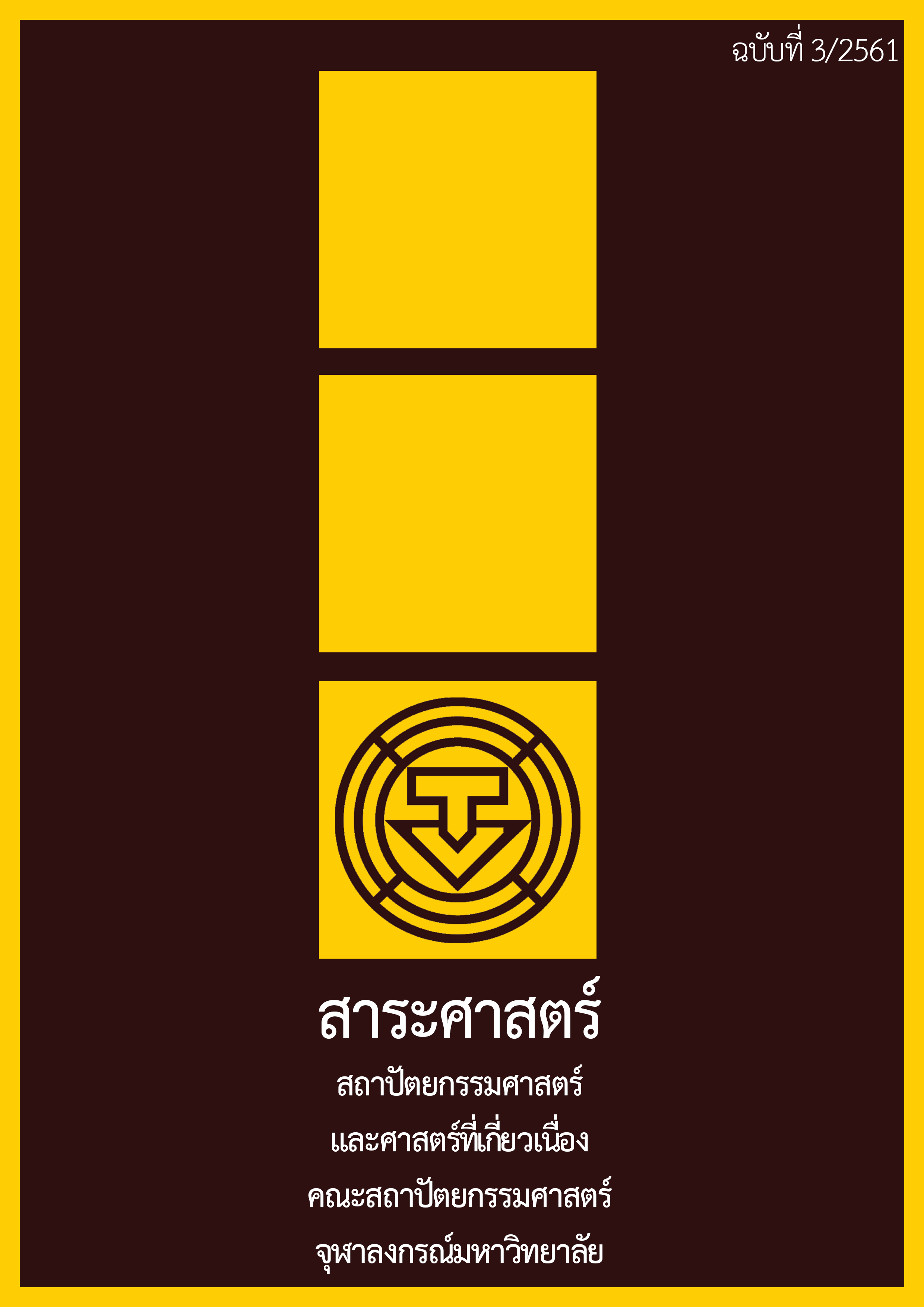Condominium Safety and Security Management: Case Study Awarded Projects "Building with Outstanding Safety and Security Management”
Main Article Content
Abstract
For the past 5 years, number of condominiums in Bangkok area significantly increased and had tendency to constantly grow which has approximately 22% growth rate. Condominium safety and security management is the most important for condominiums’ residents.
However, in Thailand has limited resource of research on this topic. In 2012 and 2015, the city of Bangkok arranged a building outstanding safety and security management’s competition which there were numbers condominium’s project acquired the award. A purpose of this research is to study condominium safety and security management from 3 award winning projects and to analyze a perception and satisfaction of the condominiums’ residents.
The research found two significant results as follow:
(1) LPN projects’ condominium safety and security management are 3 case studies in this research. These project are managed under “F-B-L-E-S+P” policy. It has three management plans which are 1. Monthly – yearly building maintenance’s plan 2. Emergency plan, and 3. 5 to 10 years’ future cost management’s plan.
These 3 case studies’ projects have a same orientation for safety and security management including 2 divisions which are legal personnel division and building management’s division. These divisions will collaborate to increase an efficiency in safety management.
(2)From the condominium residential perception and satisfaction topics, 78.25 – 99.6% of the residents are understanding and willing to cooperate with projects’ safety plan while the satisfactory rate is 4.41 – 4.71 which indicate the high – highest level. Lumpini Place Ratchayothin is on the top rank on the perception and cooperation topic while Lumpini Place Ratchada-Rama 9 is the first rank on satisfactory topic.
The finding of safety literature review illustrates that both rewarding criteria and legal personnel’s building maintenance plan put the main concentration on the fire prevention and suppression. On the other hand, the residents focus the most on life and property’s safety, following by the fire prevention and suppression and, hygiene. Therefore, a public relation should encourage the residents to aware of the fire prevention and suppression first because it caused the highest damage. Instructing the residents to prepare and plan a fire prevention guideline and other related knowledge in order to decrease risk of life and property’s damage are also recommended.
Article Details
References
Nexus Research. “แนวโน้มตลาดที่อยู่อาศัยปี 2559.” สืบค้น 31 ตุลาคม 2560. https://www.realist.co.th/blog/ ตลาดที่อยู่อาศัย 2559/.
ภานุพงศ์ นิลตะโก. “บทบาทหน้าที่และการมีส่วนร่วมในการบริหารอาคารชุดของเจ้าของร่วม.” วิทยานิพนธ์ปริญญามหาบัณฑิต จุฬาลงกรณ์มหาวิทยาลัย, 2556.
สุรชัย ตรัยศิลานันท์. “ปัจจัยที่มีผลต่อการรับรู้การจัดการความปลอดภัยของพนักงานโรงงานอุตสาหกรรมพลาสติกในจังหวัดนครราชสีมา.” วิทยานิพนธ์ปริญญาการจัดการมหาบัณฑิต มหาวิทยาลัยเทคโนโลยีสุรนารี นครราชสีมา, 2552.
สุวัฒนา แซ่ตั้ง. “ปัจจัยที่มีผลต่อความพึงพอใจในการใช้บริการของผู้อยู่อาศัยในชุมชนลุมพินี.” วิทยานิพนธ์บริหารธุรกิจมหาบัณฑิต มหาวิทยาลัยธรรมศาสตร์, 2558.
เสริชย์ โชติพานิชและคณะ. การจัดการนิติบุคคลอาคารชุดพักอาศัย. กรุงเทพฯ:โรงพิมพ์แห่งจุฬาลงกรณ์มหาวิทยาลัย. 2559.
หลักเกณฑ์การตรวจสอบอาคาร 9 ประเภท ฉบับ พ.ศ. 2555. กรุงเทพฯ: กรุงเทพมหานคร วิศวกรรมสถานแห่งประเทศไทย ในพระบรมราชูปถัมภ์ สมาคมสถาปนิกสยามในพระบรมราชูปถัมภ์ สมาคมผู้ตรวจสอบและบริหาร ความปลอดภัยอาคาร, 2555.
อรรจน์ชญาณ์. “กทม.มอบ 26 รางวัลสุดยอดอาคารต้นแบบด้านความปลอดภัยประจำปี 2558.” สืบค้น 30 สิงหาคม 2560. https://www.bangkok.go.th/main/page.php?&43-News&type=detail&id=5214.
Maslow, Abraham. Motivation and Personality. 2nd ed. New York: Harper & Row, 1970.


